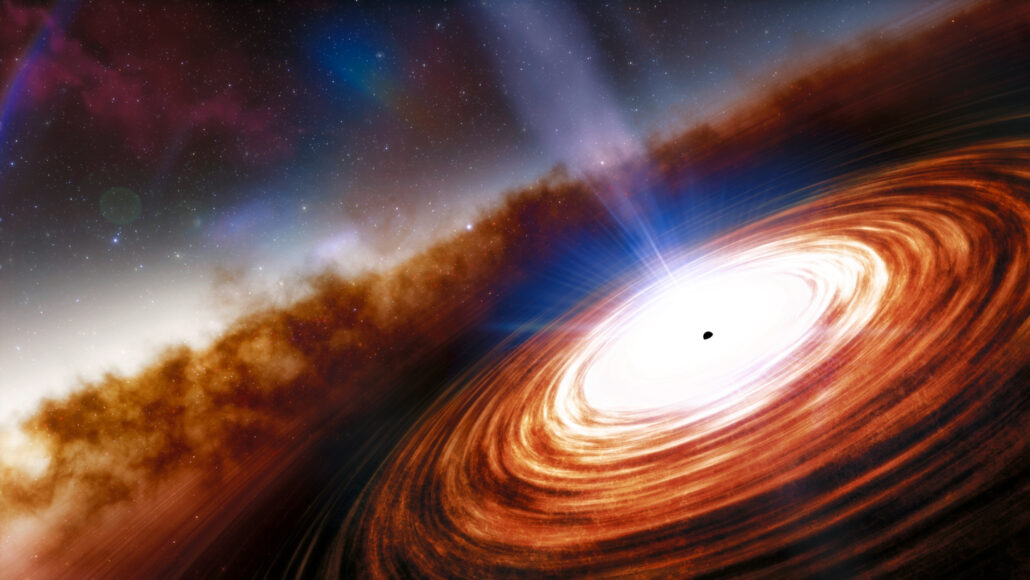The black hole doesn’t fit theories of how the cosmic beasts grow so massive

A quasar is a supermassive black hole in the core of a galaxy, wrapped in a bright disk of material. The most distant quasar now known is J0313-1806 (illustrated), which dates back to when the universe was a mere 670 million years old.
NOIRLAB/NSF/AURA/J. DA SILVA
By Maria Temming
The most ancient black hole ever discovered is so big it defies explanation.
This active supermassive black hole, or quasar, boasts a mass of 1.6 billion suns and lies at the heart of a galaxy more than 13 billion light-years from Earth. The quasar, dubbed J0313-1806, dates back to when the universe was just 670 million years old, or about 5 percent of the universe’s current age. That makes J0313-1806 two times heavier and 20 million years older than the last record-holder for earliest known black hole (SN: 12/6/17).
Finding such a huge supermassive black hole so early in the universe’s history challenges astronomers’ understanding of how these cosmic beasts first formed, researchers reported January 12 at a virtual meeting of the American Astronomical Society and in a paper posted at arXiv.org on January 8.
Supermassive black holes are thought to grow from smaller seed black holes that gobble up matter. But astronomer Feige Wang of the University of Arizona and colleagues calculated that even if J0313-1806’s seed formed right after the first stars in the universe and grew as fast as possible, it would have needed a starting mass of at least 10,000 suns. The normal way seed black holes form — through the collapse of massive stars — can only make black holes up to a few thousand times as massive as the sun.
A gargantuan seed black hole may have formed through the direct collapse of vast amounts of primordial hydrogen gas, says study coauthor Xiaohui Fan, also an astronomer at the University of Arizona in Tucson. Or perhaps J0313-1806’s seed started out small, forming through stellar collapse, and black holes can grow a lot faster than scientists think. “Both possibilities exist, but neither is proven,” Fan says. “We have to look much earlier [in the universe] and look for much less massive black holes to see how these things grow.”
No comments:
Post a Comment